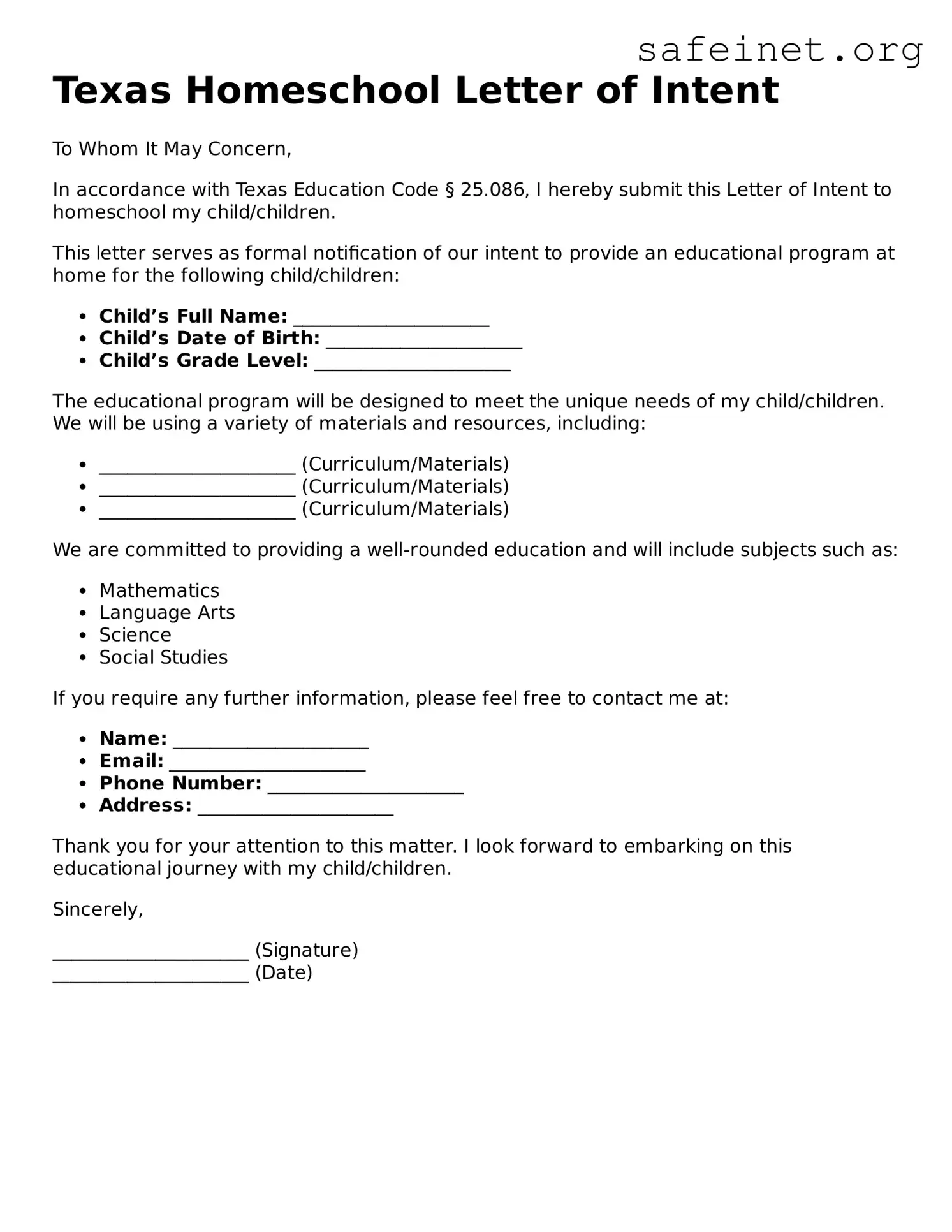What is the Texas Homeschool Letter of Intent?
The Texas Homeschool Letter of Intent is a document submitted to inform the local school district of your decision to homeschool your child. This letter serves as a formal notification that you will be providing your child's education outside of the traditional public school system.
Do I have to submit a Letter of Intent for homeschooling in Texas?
While Texas law does not mandate that you submit a Letter of Intent, many families choose to do so to maintain open communication with their local school district. It can help clarify your educational approach and ensure that you have fulfilled your obligation to notify the district.
Who needs to sign the Letter of Intent?
The Letter of Intent should be signed by the parent or legal guardian who is responsible for the homeschooling. If both parents are involved, both can sign the letter, but it is not a requirement.
What information should be included in the Letter of Intent?
Typically, the Letter of Intent should include your name, your child’s name, and your address. Additionally, you may wish to include the date you plan to start homeschooling and a statement defining your intent to educate your child outside of the public school system.
Is there a specific format for the Letter of Intent?
There is no official form designated by the state of Texas. You can write the letter in a simple, clear format. Ensure that all necessary information is included and that it is signed by the parent or guardian.
Do I need to send the Letter of Intent to the Texas Education Agency?
No, the Letter of Intent does not need to be sent to the Texas Education Agency. Instead, you should submit it to your local school district’s administrative office, where it will be kept on record.
What happens after I submit the Letter of Intent?
After submitting your Letter of Intent, your local school district may acknowledge receipt, but there is no formal response required. You may proceed with your homeschooling plans as you see fit.
Is there a deadline for submitting the Letter of Intent?
There is no strict deadline for submitting the Letter of Intent. However, it is advisable to submit it before you begin homeschooling to ensure that your plans are clearly communicated to the school district.
Can I withdraw my child from public school before submitting the Letter of Intent?
Yes, you may withdraw your child from public school before submitting the Letter of Intent. However, it is recommended to do this formally, as some districts require notice of withdrawal. Be sure to keep records of your communications.
What if I change my mind about homeschooling?
If you decide to return to public schooling, you do not need to submit a new Letter of Intent. Simply contact your local school district to re-enroll your child. It’s a good idea to check for any specific requirements the district may have regarding re-enrollment.
